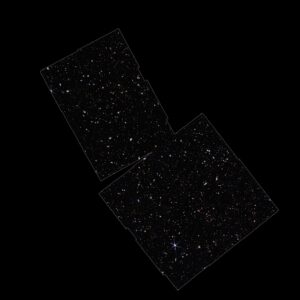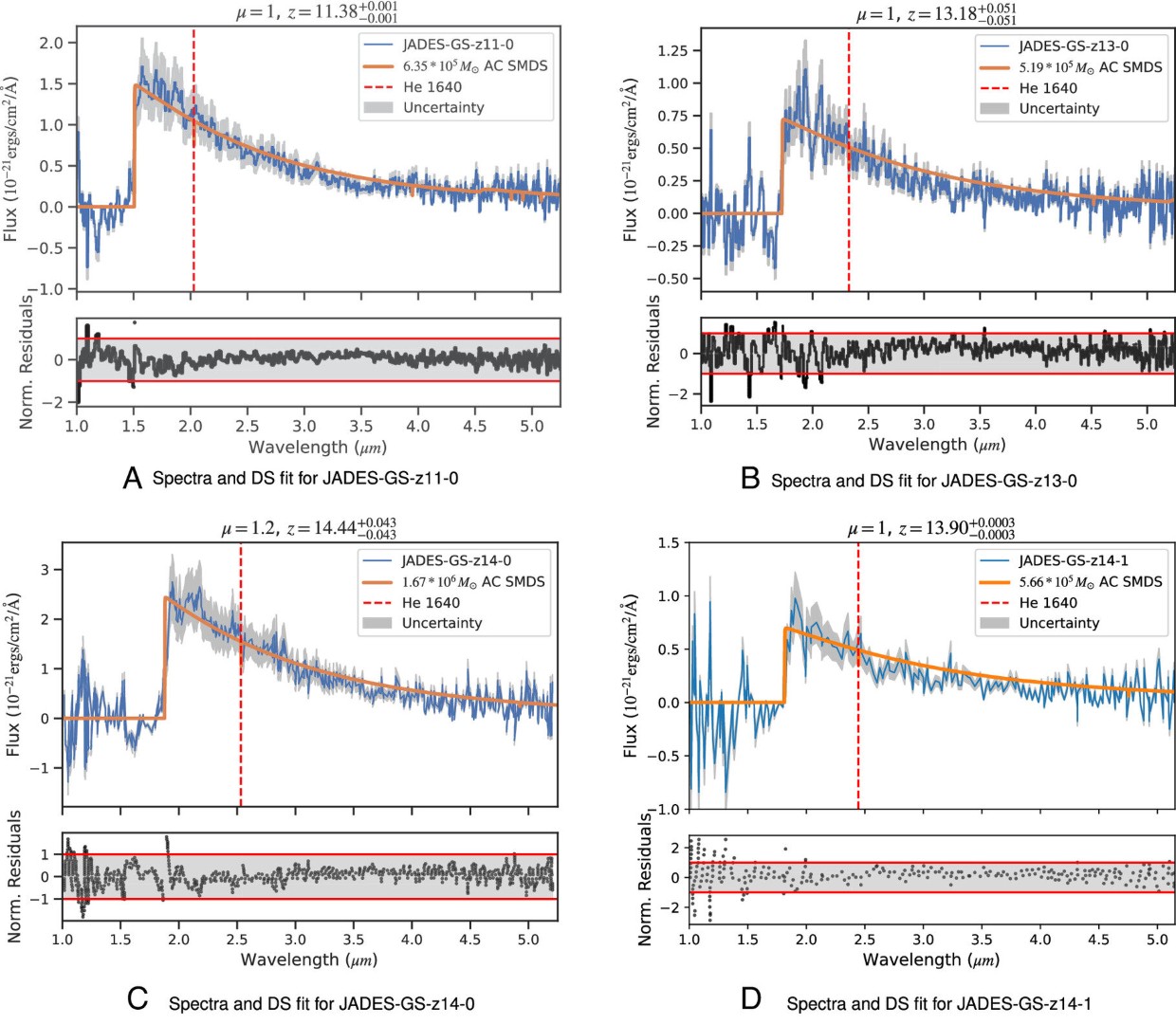
The first stars in the universe formed out of pristine hydrogen and helium clouds, in the first few hundred million years after the Big Bang. New James Webb Space Telescope (JWST) observations reveal that some of the first stars in the universe could have been very different from regular (nuclear fusion-powered) stars, which have been observed and cataloged by astronomers for millennia.
A recent study led by Cosmin Ilie, at Colgate University, in collaboration with Shafaat Mahmud, Jillian Paulin at UPenn, and Katherine Freese, at The University of Texas at Austin, identifies four extremely distant objects which are consistent, both from the point of view of their observed spectra and morphology, with being supermassive dark stars. The paper is published in the journal Proceedings of the National Academy of Sciences.
“Supermassive dark stars are extremely bright, giant, yet puffy clouds made primarily out of hydrogen and helium, which are supported against gravitational collapse by the minute amounts of self-annihilating dark matter inside them,” Ilie said.
Supermassive dark stars and their black hole remnants could be key to solving two recent astronomical puzzles: the larger than expected extremely bright, yet compact, very distant galaxies observed with JWST, and the origin of the supermassive black holes powering the most distant quasars observed.
Freese developed the original theory behind dark stars with Doug Spolyar and Paolo Gondolo. They published their first paper on this theory in the journal Physical Review Letters in 2008.
(For additional information, “The names JADES-GS-z13-0, JADES-GS-z12-0, and JADES-GS-z11-0 indicate they were discovered by the JWST Advanced Deep Extragalactic Survey (JADES), are located in the GOODS-South (GS) field, and have high redshifts (z), with the numbers 13, 12, and 11 representing their relative distances from Earth. “JADES” is the name of the James Webb Space Telescope (JWST) survey program, “GS” refers to the GOODS-South field of galaxies, and the “z” value signifies a high redshift, which is an indicator of great distance in an expanding universe. The “0” at the end typically denotes that these are the first objects identified with that specific redshift in the dataset.”)
To view the full article, see https://phys.org/news/2025-10-potential-gun-signature-supermassive-dark.html?utm_source=nwletter&utm_medium=email&utm_campaign=daily-nwletter

